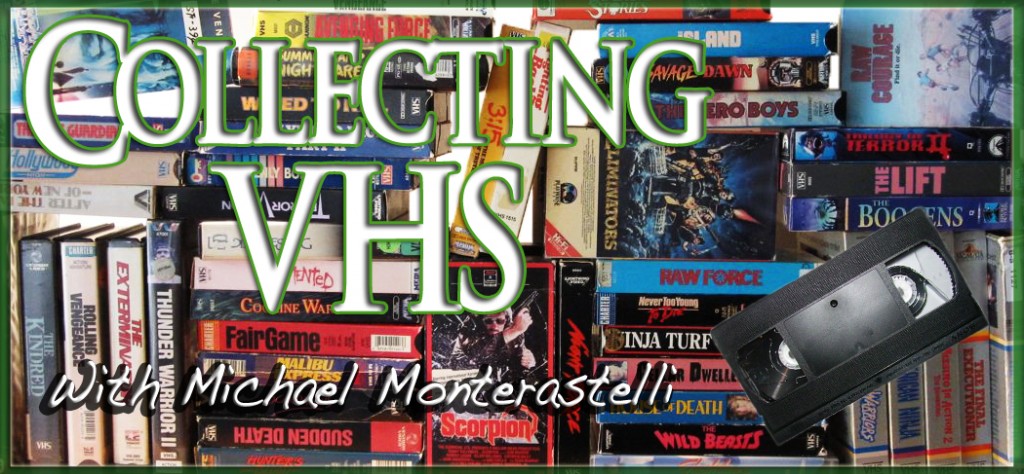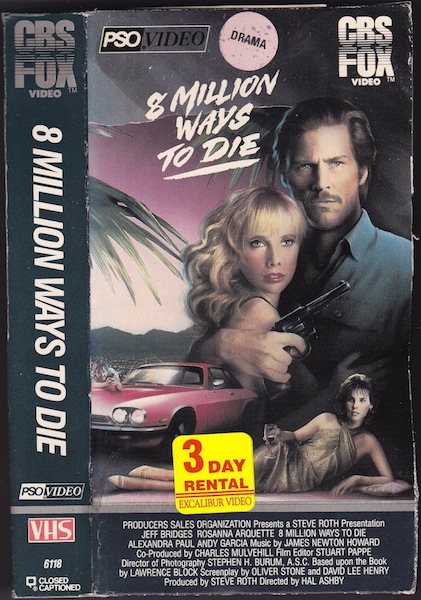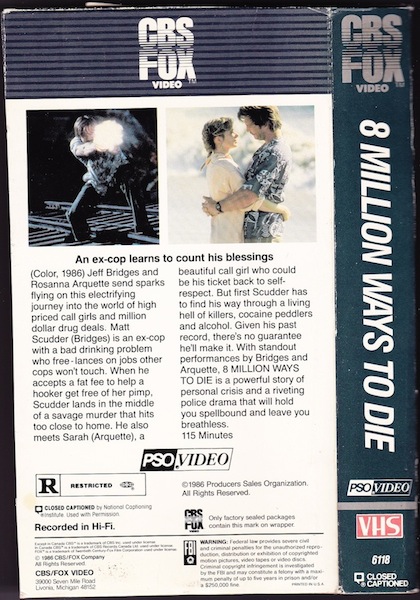
Not that long ago the video store was a mundane and sometimes obnoxious part of life; driving over to some lonesome strip mall with your friends or family to comb through the all-too-often disorganized shelves of your local shop, argue over a selection, and then be stuck with it, for good or ill. Yet, it was also sublime. And for those who lived during the true video boom, video stores also equate to another bygone commodity: VHS. When JVC’s Video Home System won the early-80’s format war, the motion picture market changed forever. The genre and B-movies that had previously filled drive-ins across the country now often went straight to VHS. Then DVD took the world by storm in the late-90’s. It was a brave new world, and sadly, many films never made the leap, trapped now on a dead format. These often aren’t “good” films, but goddammit, they were what made video stores great. For we here at CHUD are the kind of people who tended to skip over the main stream titles, our eyes settling on some bizarre, tantalizing cover for a film we’d never even heard of, entranced. These films are what VHS was all about.
Some people are still keeping the VHS flame burning. People like me, whose Facebook page Collecting VHS is a showcase for the lost charms of VHS box artwork. With this column it is my intention to highlight these “lost” films and the only rule I have for myself is that they cannot be available on DVD.
Title: 8 Million Ways To Die
Year: 1986
Genre: Neon-noir
Tagline: Death comes to all except those who deserve it most.
Released by: CBS Fox Video
Director: Hal Ashby
Plot: Matt Scudder (Jeff Bridges) is an ex-cop with a serious drinking problem who agrees to help a hooker get free of her pimp for a nice fee. When she turns up brutally murdered, he finds himself caught up in the world of high priced call girls and million dollar drug deals. In order to find the killers he’ll have to journey through a sleazy L.A. underworld of cocaine peddlers, while resisting the urge to return to alcohol abuse.
Thoughts: “The street light makes my pussy hair glow in the dark like cotton candy.” – Alexandra Paul in 8 Million Ways To Die.
At some point during the early eighties the filmmakers who grew up on the classic film noirs of the forties and fifties started doing their own post modern spins on the American crime thriller. There was Lawrence Kasdan’s steamy Body Heat and Michael Mann’s visionary Thief in 1981, which began a whole barrage of stylish and sexy neo-noirs. Brian De Palma would follow with Blow Out, Scarface and the sublime Body Double. And who could forget about William Friedkin’s hellishly brilliant To Live and Die in L.A. in 1985? These films had the essence of the earlier noir themes, but the cops were a lot dirtier and the crooks were a lot flashier. In the Reagan eighties crime did pay and the screens were filled with yuppie gangsters that wore Giorgio Armani and Hugo Boss suits, drove Ferraris and Porsches, and preferred cocaine to scotch. The cops and private dicks were working class guys that looked and acted like uncouth bums in comparison.
Such is the case for Hal Ashby’s 8 Million Ways To Die, which begins with an opening credits crawl over the L.A. freeway (that features the same font Nicolas Winding Refn used in Drive) and segues into a raid on a suspected drug dealer’s home led by Matt Scudder (Jeff Bridges) of the LAPD. When the suspect refuses to go quietly and uses a baseball bat on the arresting officers, Scudder is forced to shoot the man dead in front of his wife and children. This unfortunate incident sends Scudder into a tailspin of alcohol abuse that causes him to lose his family and police career.
Six months later, Scudder is sober and attending an AA meeting when a woman in his group gives him an address to where he can find a friend of hers who has a job for him. He follows the directions to a beautiful mansion in the hills that is being used as an upscale lounge for gambling and high priced prostitution. Here is where Scudder meets Sunny (Alexandra Paul), a hooker who desperately wants out of the business. She asks Scudder to bribe her pimp, Willie ‘Chance’ Walker (Randy Brooks from Reservoir Dogs) so that she can leave, but Willie insists that he does not take the girl’s money and that he only pays the ladies to be available to his guests. Sunny is obviously hiding something about someone else, but before Scudder can find out who and what, she’s brutally murdered and dumped in a ditch.
This pushes Scudder into another booze bender and he wakes up several days later in a detox ward. When he gets home he finds a few clues, some cocaine and a bag full of money left from Sunny. These items lead him to a greasy, pony-tailed cocaine dealer named Angel Moldonado (Andy Garcia) and a hooker-friend of Sunny’s named Sarah (Rosanna Arquette). After some snooping, Scudder realizes that Angel was the one responsible for Sunny’s murder and he wants to bust him for it by setting him up with a big coke deal that will be raided by his LAPD buddies. Sarah helps Scudder and the two start a relationship that angers the jealous Angel, so he kidnaps her.
This all leads to a big final showdown in a warehouse where Angel’s gang meets up with Scudder and Willie’s boys to exchange the girl for the enormous amount of cocaine that Scudder has taken from them. He has the drugs soaked with gasoline and if Angel makes one false move he’ll ignite the stash. This scene is very intensely acted by Bridges and Garcia and is one of the greatest fucked-up drug deals ever filmed, in my opinion. In the end, the good guys win and Scudder and Sarah walk off into the sunset together on the beach. Ah, only in the eighties was it ever cool to fall in love with a hooker.
Okay, so this is not a great movie by any means, but it’s an interesting and very well acted one. This was the legendary Hal Ashby’s last film, who’s previous credits included: Harold and Maude, The Last Detail, Shampoo, Coming Home and Being There. Ashby was fired from this movie shortly after principal photography was completed for creative differences. He was a recovering alcoholic at the time and there’s a lot of attention in the film that’s put on the main character’s drinking problem. I think that this put the actual murder plot of the film on the backburner, because it’s a little shaky at times and there is more than a few plot holes to navigate around. Oliver Stone was one of the writers of this movie and apparently he was extremely displeased over how his script was changed by both Robert Towne’s rewriting and Ashby’s extensive use of improvising with the actors. The results are a lot of great lines mixed with a very intense and realistic acting style that makes some of the scenes more about the performances than about the actual story.
However, this movie works for me based on style and acting alone. Jeff Bridges delivers one of his best and most underrated roles as Matt Scudder. The scenes where he’s shaking off one of his many booze binges is some of the most realistic acting I’ve ever seen. Andy Garcia nails it as well in one of his very first movie roles as the sleazy coke dealer who wears bright designer suits, rides around in a Mercedes with a snow cone machine in the trunk, and lives in a home designed by the famous architect Galli. The contrast between the bad guy’s opulent lifestyle and the good guy’s poverty stricken appearance is as glaring as the oppressive L.A. sun that bathes the screen with light and color while the darkest things imaginable are happening all around. There are over 8 million stories in the naked city… and this was one of them.
Like Collecting VHS on Facebook


